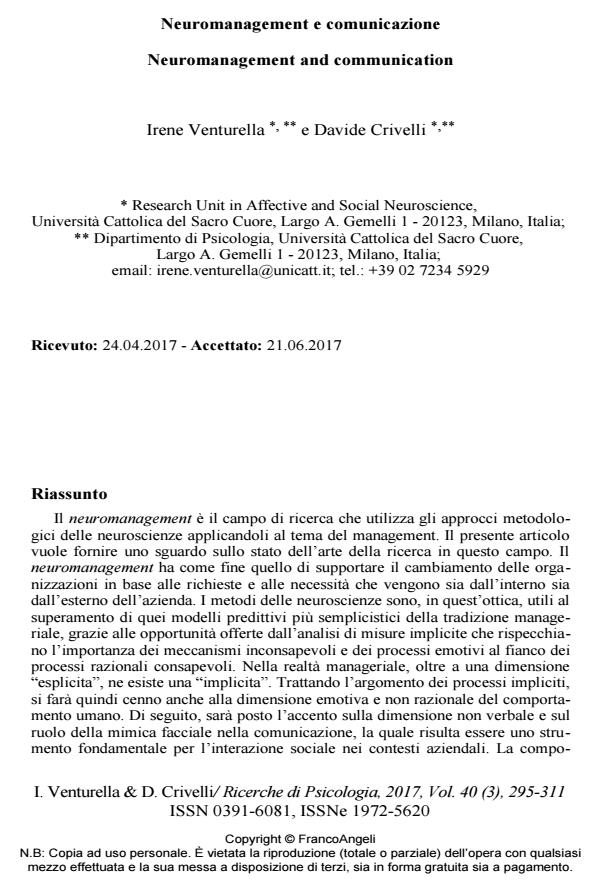Neuromanagement and communication
Journal title RICERCHE DI PSICOLOGIA
Author/s Irene Venturella, Davide Crivelli
Publishing Year 2017 Issue 2017/3
Language Italian Pages 17 P. 295-311 File size 231 KB
DOI 10.3280/RIP2017-003002
DOI is like a bar code for intellectual property: to have more infomation
click here
Below, you can see the article first page
If you want to buy this article in PDF format, you can do it, following the instructions to buy download credits

FrancoAngeli is member of Publishers International Linking Association, Inc (PILA), a not-for-profit association which run the CrossRef service enabling links to and from online scholarly content.
Neuromanagement is a research field where neuroscience methods and techniques are applied to management. The paper wants to sketch an overview of the state of the art of research in this field. Neuromanagement aims at supporting changes within organizations according to internal and external needs. Neuroscience methods are, in this perspective, useful in overcoming simplistic predictive models from management tradition thanks to the opportunities offered by the analysis of implicit measures, which reflect the importance of unconscious mechanisms and emotional processes together with rational and aware processes. In the management world, "explicit" and "implicit" dimensions coexist. While introducing the topic of implicit processes, we will then discuss even emotional and non-rational dimensions of human behaviour. We will also focus on non-verbal dimensions of communication and on the role of facial mimicry, which is a crucial channel for social interaction in corporate contexts. Finally, the verbal component of face-to-face interactions integrates the non-verbal dimension, enriching and completing the communicative process towards the creation of meaning.
Keywords: Neuromanagement, communication, neuroscience tools, implicit processes, facial mimicry, face-to-face.
- Face-to-face vs. remote digital settings in job assessment interviews: A multilevel hyperscanning protocol for the investigation of interpersonal attunement Michela Balconi, Giulia Fronda, Federico Cassioli, Davide Crivelli, Humaira Nisar, in PLOS ONE /2022 pp.e0263668
DOI: 10.1371/journal.pone.0263668
Irene Venturella, Davide Crivelli, Neuromanagement e comunicazione in "RICERCHE DI PSICOLOGIA " 3/2017, pp 295-311, DOI: 10.3280/RIP2017-003002